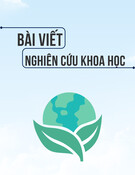
* Corresponding author.
E-mail address: tahriluntad@gmail.com (Tahril)
© 2020 Growing Science Ltd. All rights reserved.
doi: 10.5267/j.ccl.2019.11.001
Current Chemistry Letters 9 (2020) 113–120
Contents lists available at GrowingScience
Current Chemistry Letters
homepage: www.GrowingScience.com
Profile of metals Fe in lay ecosystem using ICP-OES in Donggala District,
Indonesia
Tahrila*, Paulina Tabab, Nursiah La Nafieb and Alfian Noorb
aChemistry Department, Tadulako University, Soekarno-Hatta Street KM. 9, Tondo, Mantikulore, Palu, Indonesia
bChemistry Department, Hasanuddin University, Perintis Kemerdekaan Street Km 10, Tamalanrea Makassar 90245, Indonesia
C H R O N I C L E A B S T R A C T
Article history:
Received August 4, 2019
Received in revised form
October 30, 2019
Accepted November 9, 2019
Available online
November 9, 2019
Research on the profile of Fe in the seagrass ecosystem has been carried out. Analysis of
seawater, sediment, seagrass samples from the association of mangroves, mangroves-coral
reefs and coral reefs taken in the waters of Donggala Regency was carried out using the ICP-
OES method (Inductively Coupled Plasma-Opticaly Emission Spectrometry). It turns out that
seagrasses associated with mangroves have higher iron concentration in their ecosystem, both
in waters, sediments, and in seagrass plants and will be lower in association with mangroves
and their association with coral reefs. Likewise, the status of seagrass has a higher
concentration of Fe than infertile status or poor status. The results become some reference to
show that seagrass plants can be bio-indicators of marine waters fertility.
© 2020 Growin
g
Science Ltd. All ri
g
hts reserved.
Keywords:
Seagrass
Association
Fe
ICP-OES
Ecosystem
1. Introduction
During this time heavy metal content data in waters often does not reflect the actual level of
pollution and danger in living things, therefore monitoring the level of heavy metal pollution in the
waters needs to be supported by monitoring of organisms’ life and sediment. Monitoring on living
organisms known as bioindicators, namely the use of certain types of organisms that can accumulate
existing pollutants so that they represent the conditions in their environment1. Various types of
organisms that live in an aquatic environment both plants and animals can be bio-indicators of metal
pollution in waters and reflect the level of bioaccumulation occurs, one of the marine plants that can
act as bio-indicators is seagrass. Seagrass are flowering plants (angiosperms) that have a rhizome true
leaves and roots that live submerged, colonizes in a region through the deployment of fruit (ropagule)
produced sexually (dioecious)2. According to Den Hartog3, roots in seagrasses do not function
important in water extraction, because the leaves can absorb nutrients directly from the seawater and
do nitrogen fixation through the root hood. Seagrass grows well in protected areas and the sand
substrate is stable and close to sediments that move horizontally 4–6. Seagrass growth is strongly
influenced by internal factors such as physiological and metabolic conditions and external factors such

114
as nutrients (nutrients) and water fertility. Environmental parameters that can affect the distribution and
growth of seagrass ecosystems include; brightness, temperature, salinity, substrate and current
velocity7,8.
The ecology of seagrass beds is not an isolated ecosystem but interacts with other ecosystems
around it. The most important interactions of seagrass ecosystems are associated with mangrove
ecosystems and coral reefs. According to Ogdem and Gladfeter [in cite Bengen8] and Unsworth9, there
are five types of interactions between seagrass beds and mangroves and coral reefs, namely; physical,
dissolved organic matter, particle organic matter, fauna migration, and human impacts. The distribution
of metals in shallow marine aquatic ecosystems is also believed to occur naturally through three
grooves, namely 1). waste disposal, 2). sediment, and 3). organic deposits. This has an effect on
absorption metalin water and in organisms that live in water. The dynamics of metals in water and
organisms living in water are often used as indicators in monitoring the metal pollution in the waters.
This is due to the metal content in water that can change and is very dependent on the environment and
climate10. The presence of metals, including Fe in marine ecosystems is caused by the existence of a
natural cycle which is a chain that moves metals from rock to the ground, to living organisms, to water
and the water returns to the rock through the process of sedimentation. The determination of heavy
metal content has been carried out by using Atomic Absorption Atom (AAS). Unfortunately, this
technique cannot be used for simultaneous metal analysis. Other methods such as High Performance
Liquid Chromatography (HPLC) can provide analytical methods simultaneously, but the determination
of metals is generally carried out with derivatization techniques and through the preconcentration
process of the column so that this technique is relatively more complicated. Progress on atomic
emission spectroscopy with the discovery of new sources of excitation gave birth to chemical analysis
techniques in Inductively Coupled Plasma (ICP). The source of excitation in ICP is the plasma
produced from radio frequency electromagnetic waves through an induction coil. This source of
excitation produces a flame with a high temperature so that it is suitable for analysis of heavy metal11.
Analysis with this technique is a simultaneous analysis with a high level of accuracy and sensitivity. In
addition, the analysis can be accomplished quickly, easily and often does not require preconcentration
of the sample first because of the high effectiveness and detection limits that are low to the ppb range.
However, the use of techniques for the analysis of heavy metals is still very limited12.
2. Results and Discussion
2.1 In Aquatic Systems
The availability of nutrients in seagrass waters, including mineral elements Fe plays an important
role in maintaining the fertility of seagrass, for which its presence in the waters is very important in
maintaining the stability of seagrass growth. Nutrients in seagrass waters are a limiting factor for their
growth13,14 and maintain autotrophic organisms that live in them15–18.
Table 1. Effects of association and seagrass status on iron (Fe) concentrations in seagrass waters
Status (S) Association (L)
L1 L2 L3
S
S1 0.0780
b
0.0677 a 0.0660 a
B A A
S2 0.0697 a 0.0657 a 0.0637 a
B AB A
S3 0.0660 a 0.0640 a 0.0633 a
A A A
Description: Based on the variance of L x S, it is proven real. Inline numbers marked with the same capital letters and numbers in the column for each
of the 3 lines marked with the same lowercase letter do not differ according to the LSD test α = 0.05.
Analysis of the variance of the effect of Fe concentration showed that the interaction effect of the
association with seagrass status was evident. The data in Table 1 shows that Fe concentration decreases
in association with coral reefs and the concentration of Fe decreases with decreasing fertility status in

Tahril / Current Chemistry Letters 9 (2020)
115
seagrass. The lowest value (0.0633 ppm) was obtained from the treatment of the association of coral
reefs with poor fertility (L3S3), and the highest (0.0780 ppm) in the treatment of the association of
mangroves with very fertile fertility rates (L1S1). This illustrates that the fertility status of seagrass
fields has an effect on the concentration of Fe in seagrass waters. An overview of data processing results
above show that the fertility status factors both seagrass association with mangrove, mangrove-reefs,
and coral reefs can be one important indicator in determining the quality of the marine environment.
The highest Fe concentration in seagrass waters is associated with mangroves and the lowest in seagrass
waters is associated with coral reefs. The survey results also illustrate that the mangrove plants in the
study area are relatively thriving in estoary areas which on land have significant agricultural activities,
this is in line with Irwan's19 opinion that mangrove plants require a rather extreme growing
environment, which requires salt water, muddy and always flooded in tidal range such as delta, river
estuary, or muddy tidal rivers. This may cause the concentration of metals in the water in the mangrove
region to be higher than the area of mangrove-coral reefs and coral reefs. According Palar20, the
concentration of metals in water can vary and depends on the environment and climate, also the
concentration of the metals in the water contained in the form of ions, free, couples organic ion, the ion
complex.
2.2 In the System Sediment
Growth environment seagrasses play arole significant in maintaining the continuity of seagrass
growth, including sediment. Sedimentary nutrients are in three forms, namely dissolved in the
sedimentary water shaft, adsorbed on the sediment surface and is present in the structure of the sediment
grains. Even though seagrasses are able to take nutrients through the leaves, the availability of nutrients
in the sediment is very important in seagrass growth. Mineral Fe which is anelement essential for plant
growth, accumulates in sediments so that it can be utilized by plants through absorption of roots.
According to Short in Persulessy et al.21, extraction of nutrients from the water column by seagrass
leaves can be considered not important when compared with nutrient extraction by roots from
sediments. Analysis of variance showed that the interaction effects of association with seagrass status
were evident. The results of the analysis data in Table 2 show that the association of association with
seagrass status clearly influences Fe concentration in sediments in seagrass ecosystems. The results of
the analysis also show that the more fertile seagrass plants, the more concentration of Fe (ppm) in the
sediment. In addition, the concentration of Fe (ppm) will increase even more if there is a mangrove
area (L1) compared to the mangrove-coral reef area (L2) and coral reef area (L3).
The highest average concentration of Fe was obtained in the treatment of fertile seagrass plants in
the mangrove area (L1S1) with a mean value of 13671.22 ppm, and the lowest was achieved in the
interaction of growth poor seagrassin the coral reef area (L3S3) with a mean value of 778,383 ppm.
Table 2. Effect of association and seagrass status on the concentration of Iron (Fe) in sediments in
seagrass ecosystems.
Status (S) Association (L)
L1 L2 L3
S
S1 13671.217 C 8347.967
b
4692.817 c
C B A
S2 9640.967 B 4752.733 a 3259.267
b
C B A
S3 5738.917 A 4473.600 a 778.583 a
C B A
Description: Based on the variance of L x S, it is proven real. Inline numbers marked with the same capital letters and column numbers for each of the 3
lines marked with the same lowercase letter do not differ according to the LSD test α = 0.05.

116
The description of the results of the processing of the data above shows that the fertility status factor
of seagrasses, both in association with mangroves, mangroves and coral reefs, can be an important
indicator in determining the quality of the marine environment. Seagrass plants that thrive in mangrove
areas, coral reefs, and coral reefs are generally located in relatively muddy sediment areas and in the
most muddy mangrove areas compared to other regions, while seagrass plants that are relatively
infertile are generally located in sedimentary areas which are relatively sandy and the most sandy coral
reefs compared to other regions. The results of this study also illustrate that the concentration of Fe in
sediments is higher than that found in waters, which indicates there has been accumulation of metals
in the sediment. Accumulation of heavy metals into sediments is influenced by sediment types20,22, and
sediment types can affect heavy metal content in sediments, with categories of heavy metal content in
sandy > sandy mud > sand.
2.3 In Seagrass Plant Systems
Iron in plants is part of an enzyme that acts as an electron carrier in photosynthesis and respiration23,
needed for the synthesis of haem compounds24,25. Analysis of the variance of the effect of Fe
concentration showed that the interaction effect of the association with seagrass status was evident.
Data in Table 3 shows that the association of associations with seagrass status clearly influences Fe
concentration in seagrass plants. The results of the analysis also show that the more fertile seagrass
plants, the higher concentration of Fe (ppm) in seagrass. Moreover, the concentration of Fe (ppm) will
increase significantly in mangrove (L1) compared to the mangrove- coral reef (L2) andarea reef coral
(L3).
Table 3. Effect of association and seagrass status on the concentration of iron (Fe) in seagrasses
Status (S) Association (L)
L1 L2 L3
S
S1 755.507 C 579.533 c 404.417
b
C B A
S2 558.767 B 432.967
b
128.733 a
C B A
S3 357.550 A 121.933 a 90.767 a
B A A
Description: Based on the variance of L x S, it is proven real. Inline numbers marked with the same capital letters and numbers in the column for each of
the 3 lines marked with the same lowercase letter do not differ according to the LSD test α = 0.05.
The highest average concentration of Fe Seagrass was obtained in fertile areas in the mangrove area
(L1S1) with a mean value of 755,507 ppm, and the lowest was achieved in the interaction of seagrass
growth in poor areas on coral reefs (L3S3) with a mean value of 90,767 ppm. The description of the
results of the processing of the data above shows that the fertility status factor of seagrasses, both in
association with mangroves, mangroves and coral reefs, can be an important indicator in determining
the quality of the marine environment. Various results of the previous studies show that seagrass plants
can be relatively filtered in water stability because they contain macromolecular compounds that have
the ability to accumulate metals in the waters. Tahril et al. 26, suggested that seagrass plants contain
proteins with complete amino acid composition. In response to the presence of metal elements in
seagrass ecosystems, according to Prange et al.27 there are three important mechanisms of response to
metal elements including Fe to seagrass plants in the aquatic environment, namely accumulation,
toxicity, and lack/absence. Iron accumulates and forms an iron-protein complex (ferritius) which is
used for photosystem II and electron transfer28. However, the absorption of excessive iron will lower
the totality of amino acids so that the plant seagrass to stress27, will increase the photosensitivity of the
accumulation of iron in kloroflast29, the significant reduction asparagine is the main nitrogen transfor
in the addition of chelate iron27,30.

Tahril / Current Chemistry Letters 9 (2020)
117
3. Conclusions
Iron metal in seagrass ecosystems from coastal waters of Donggala district based on the results of
analysis using ICP-OES (Inductively Coupled Plasma-Optical Emission Spectrometry), shows that:
1. Iron concentration in seagrass ecosystems is higher in status with very fertile (rich) fertility
compared to the status of infertile seagrass (less rich) and poor seagrass status.
2. Seagrasses associated with mangroves have a higher iron concentration in their ecosystem, both in
waters, sediments, and in seagrass plants. Iron concentrations in seagrass ecosystems will be even
lower in their association with mangroves and their association with coral reefs.
3. Seagrass beds can be bio-indicators of aquatic fertility, especially heavy metals Fe.
4. Experimental
4.1. Location and Time of Research
This study was conducted in the coastal waters of Donggala Regency, Central Sulawesi Province.
The study was conducted for three months. Metal analysis was planned to be carried out in the
laboratory of STORMA, Faculty of Agriculture, Tadulako University and Radiation Chemistry
Laboratory, MIPA Faculty, Hasanuddin University.
Fig. 1. The Location of Research




![Câu hỏi ôn tập Môi trường và phát triển [năm]](https://cdn.tailieu.vn/images/document/thumbnail/2025/20250710/kimphuong1001/135x160/2361752136158.jpg)
![Câu hỏi ôn tập Con người và môi trường: Tổng hợp [mới nhất/chuẩn nhất]](https://cdn.tailieu.vn/images/document/thumbnail/2025/20250704/kimphuong1001/135x160/8741751592841.jpg)
![Câu hỏi ôn tập môn Môi trường [chuẩn nhất]](https://cdn.tailieu.vn/images/document/thumbnail/2025/20250702/kimphuong555/135x160/62401751441591.jpg)
![Tài liệu tập huấn quản lý và bảo tồn đất ngập nước [mới nhất]](https://cdn.tailieu.vn/images/document/thumbnail/2025/20250627/vijiraiya/135x160/30351751010876.jpg)

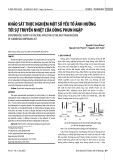

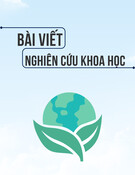
![Tài liệu Vi sinh vật môi trường [Mới nhất]](https://cdn.tailieu.vn/images/document/thumbnail/2025/20251123/ngkimxuyen/135x160/21891763953413.jpg)
![Sổ tay truyền thông Phân loại chất thải rắn sinh hoạt trên địa bàn tỉnh Quảng Nam [Chuẩn nhất]](https://cdn.tailieu.vn/images/document/thumbnail/2025/20251114/kimphuong1001/135x160/1701763094001.jpg)
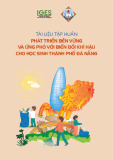
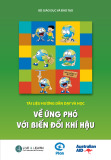
![Quản lý chất thải nguy hại: Sổ tay Môi trường [Chuẩn nhất]](https://cdn.tailieu.vn/images/document/thumbnail/2025/20251029/kimphuong1001/135x160/9011761720170.jpg)




